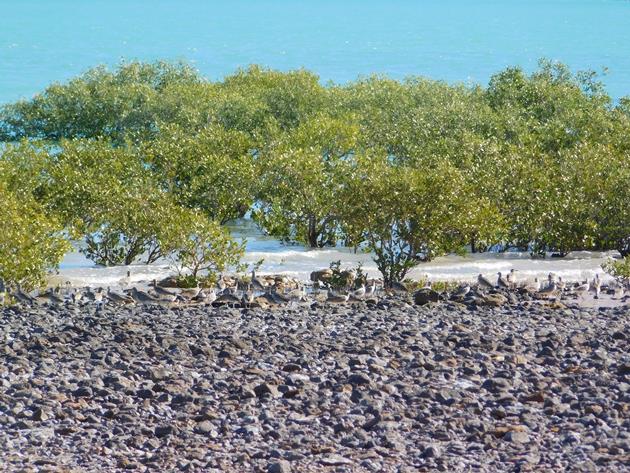
Migration is in full swing here in Broome and Roebuck Bay is starting to empty out. Each evening the shorebirds head off on their migration to breed in the Northern hemisphere. We have been lucky enough to observe the V formation over our garden as dusk falls and the call of the Bar-tailed Godwit as they set off on their long journeys. Most of the shorebirds will be flying non-stop until they reach China.
The shorebirds that remain this week are still heavily camouflaged in amongst the rocks. There are Whimbrel in the header photo above, but you may need to look closer to see them. This photo below should make it easier for you.
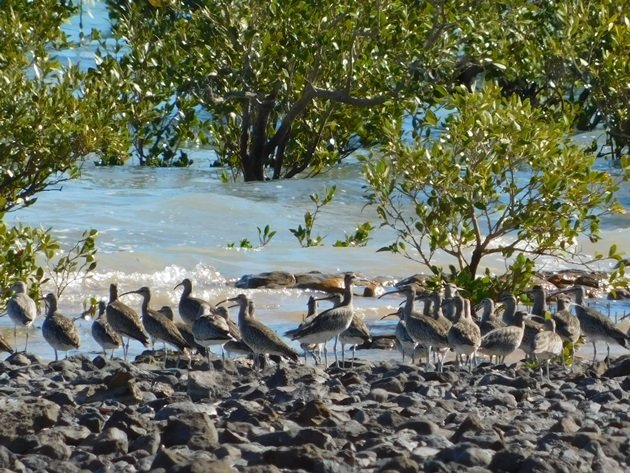
Whimbrel amongst the mangroves
The shorebirds are very nervous of the raptors in the area. A White-bellied Sea-Eagle was perched on the top of the cliffs on our visit this week and there were also a pair of Brahminy Kites. It didn’t take much for the shorebirds to take off and then return to the beach. They need to conserve as much energy as possible for the flight ahead. Now the flocks are so much smaller there is not quite the same amount of “safety in numbers” as there has been for the past few months.
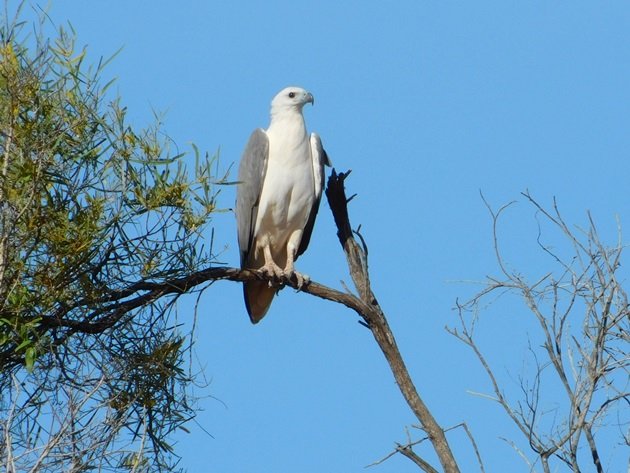
White-bellied Sea-Eagle observing the shorebirds on the beach
The shorebirds kept lifting off briefly and then returning to the same area. Once the tide drops they are able to feed on the mud again and get ready for migration. The Red Knot are now very red and they are the last species of shorebird to leave Broome. They will continue to migrate for another fortnight.
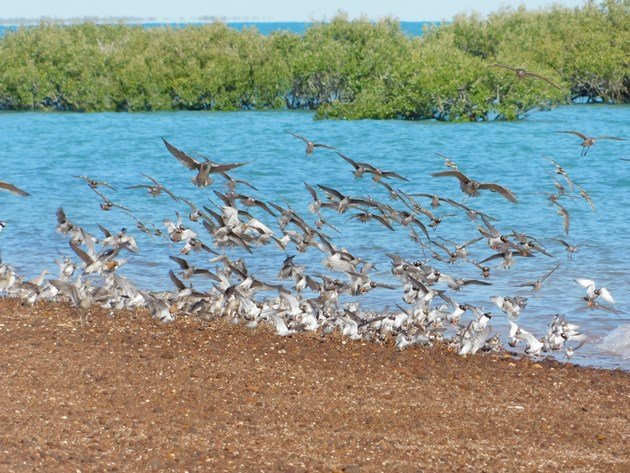
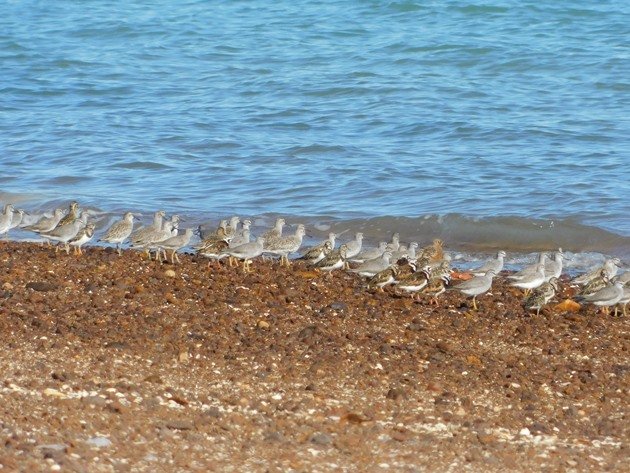
Shorebirds nervously waiting for the tide to drop
As we moved further along the beaches of Roebuck Bay the tide continued to drop. The shorebirds were actively moving forward to bathe and to feed. There were still a nice selection of different migratory species including Eastern Curlew, Whimbrel, Bar-tailed Godwit, Black-tailed Godwit, Great Knot, Red Knot, Ruddy Turnstone, Grey-tailed Tattler, Terek Sandpiper, Greater Sand Plover, Lesser Sand Plover, Common Greenshank, Sanderling, Pacific Golden Plover and Grey Plover.
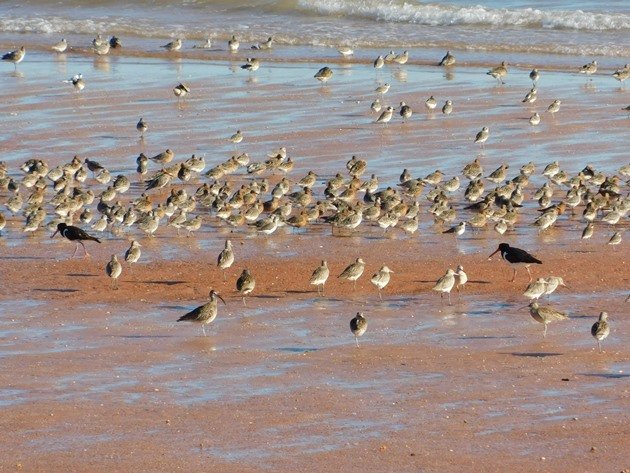
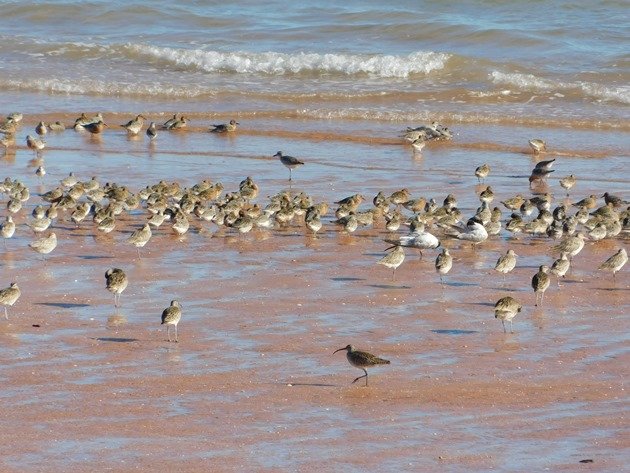
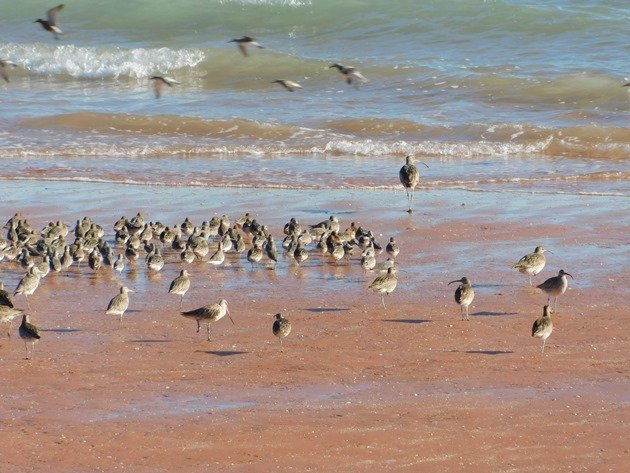
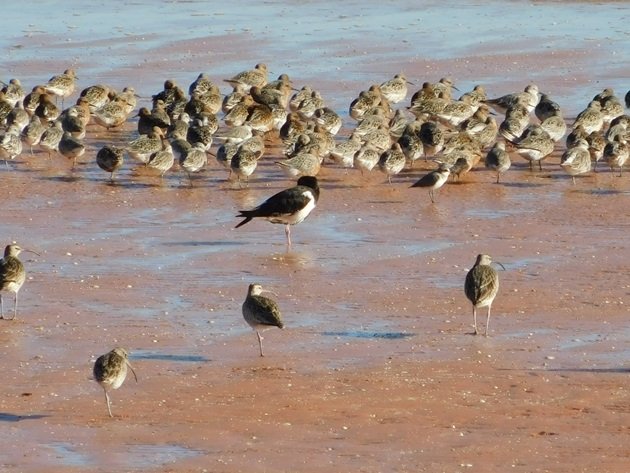
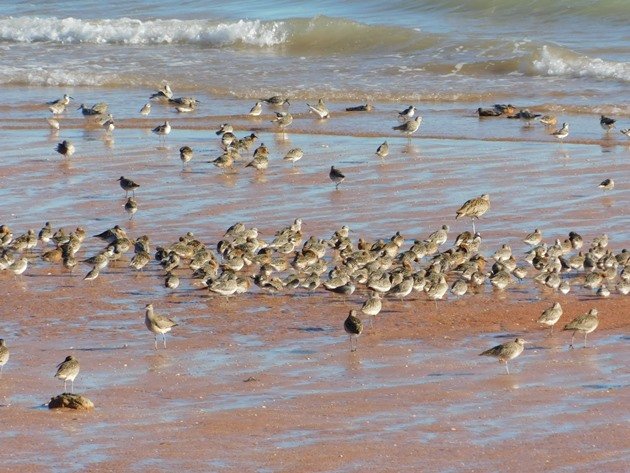
Shorebirds roosting and bathing in Roebuck Bay
You may well have noticed the Pied Oystercatchers in the above photos. One of the birds is a juvenile from last year’s breeding and still has a dull bill tip and pale legs. Soon the Pied Oystercatchers will mostly have the beach to themselves. There will be some shorebirds that remain in Broome and not migrate, but the beaches will be a lot emptier than they have been for many months.
There has been a distinct change in the weather in recent days. There are now a lot more dragonflies, which indicates a change in the seasons. Our overnight temperatures have plummeted too. We are no longer experiencing nights just below 30c, but now just below 20c. The apparent temperature is a lot lower due to the low humidity.
We wish the shorebirds all safe travels and look forward to them returning later in the year. Despite the global pandemic the shorebirds are able to continue their lives as normal. They don’t have any problem with international travel, because they are “international birds”!











Leave a Comment